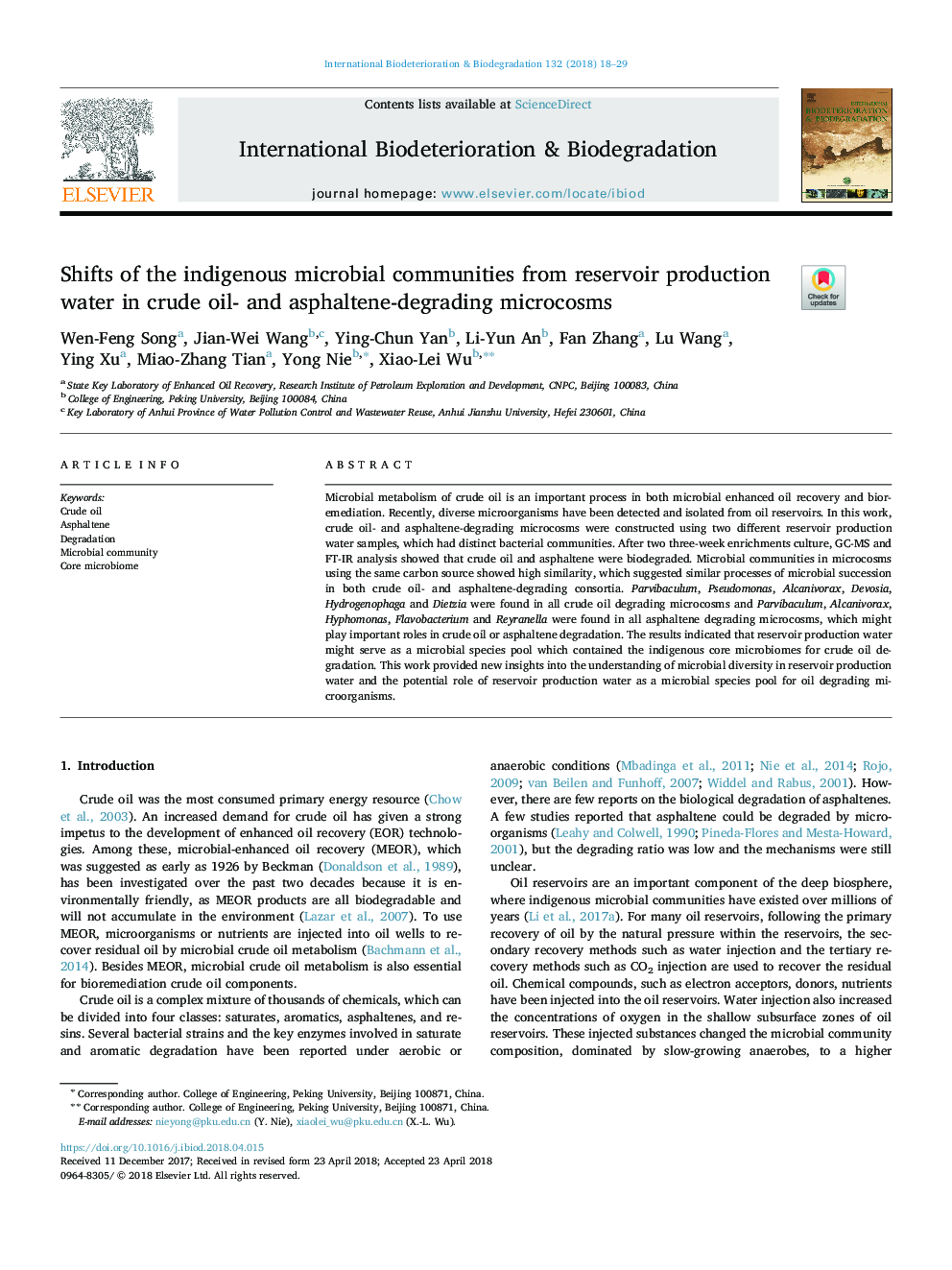| Article ID | Journal | Published Year | Pages | File Type |
|---|---|---|---|---|
| 8843727 | International Biodeterioration & Biodegradation | 2018 | 12 Pages |
Abstract
Microbial metabolism of crude oil is an important process in both microbial enhanced oil recovery and bioremediation. Recently, diverse microorganisms have been detected and isolated from oil reservoirs. In this work, crude oil- and asphaltene-degrading microcosms were constructed using two different reservoir production water samples, which had distinct bacterial communities. After two three-week enrichments culture, GC-MS and FT-IR analysis showed that crude oil and asphaltene were biodegraded. Microbial communities in microcosms using the same carbon source showed high similarity, which suggested similar processes of microbial succession in both crude oil- and asphaltene-degrading consortia. Parvibaculum, Pseudomonas, Alcanivorax, Devosia, Hydrogenophaga and Dietzia were found in all crude oil degrading microcosms and Parvibaculum, Alcanivorax, Hyphomonas, Flavobacterium and Reyranella were found in all asphaltene degrading microcosms, which might play important roles in crude oil or asphaltene degradation. The results indicated that reservoir production water might serve as a microbial species pool which contained the indigenous core microbiomes for crude oil degradation. This work provided new insights into the understanding of microbial diversity in reservoir production water and the potential role of reservoir production water as a microbial species pool for oil degrading microorganisms.
Related Topics
Life Sciences
Environmental Science
Environmental Science (General)
Authors
Wen-Feng Song, Jian-Wei Wang, Ying-Chun Yan, Li-Yun An, Fan Zhang, Lu Wang, Ying Xu, Miao-Zhang Tian, Yong Nie, Xiao-Lei Wu,
